My Most Thrilling Sky Fight: Lieut. Alan McLeod, R.F.C.
Amidst all the great pulp thrills and features in Sky Fighters, they ran a true story feature collected by Ace Williams wherein famous War Aces would tell actual true accounts of thrilling moments in their fighting lives! This time we have Canada’s Lieutenant Alan McLeod’s most thrilling sky fight!
Alan McLeod was one of 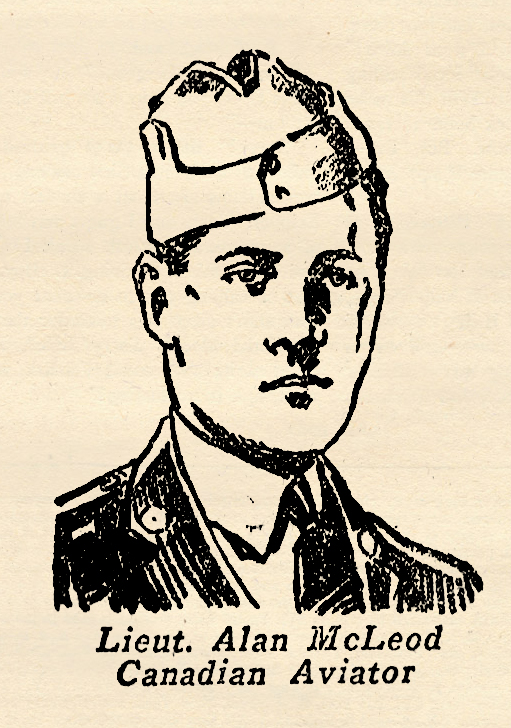 the three Canadian airmen winning the coveted award of the Victoria Cross, the highest honor bestowed on its fighting heroes by the British Empire, He was the youngest flyer ever to receive the honor, having it pinned on his chest in appropriate ceremonies at Buckingham Palace a few months before his nineteenth birthday.
the three Canadian airmen winning the coveted award of the Victoria Cross, the highest honor bestowed on its fighting heroes by the British Empire, He was the youngest flyer ever to receive the honor, having it pinned on his chest in appropriate ceremonies at Buckingham Palace a few months before his nineteenth birthday.
Whereas most of the other British airmen who received this coveted honor accomplished their deeds of heroic valor in fast, single-seater fighting machines, young McLeod used a heavy, unwieldy, Armstrong-Whitworth two-seater which was poorly equipped for air combat. But Alan McLeod used it just as though it were a pursuit ship, never running from a possible chance lo shoot it out with enemy planes in the air, no matter how heavy the odds were against him. The fight he tells about below is one of the great epics of the air. McLeod was wounded six times, but recovered, only to succumb to influenza five days before the armistice was signed.
DOWN IN FLAMES
by Lieut. Alan McLeod, R.F.C. • Sky Fighters, June 1934
WHEN zooming up after dropping my last bomb, I saw a Hun Fokker, coming at me from the rear. I swung my machine up on one wing, gave my observer, Hammond, in the back seat, a chance at it. His first burst of Lewis fire was effective. It went fluttering down like a falling leaf, swaying from side to side.
I climbed for altitude then. At 5,000 feet the sun broke through the clouds. A flight of eight scarlet-painted Fokker tripes burst through with the sun. One dived, then zoomed up under my tail. I banked steeply. Hammond got his guns on it just as the Hun let go with a burst that crackled through the lower wing just beyond my head. It went spiralling down, a black smoke trail pluming behind it.
The seven other Fokker tripes dived in with a vengeance then, attacking from all sides, and simultaneously! The air was full of German tracer. My wings were sieved. Flying wires snapped, coiled up like watch springs. I felt something like a hot knife slide across my stomach. A red shape flashed down in front of me. I pressed my gun triggers, sent in a withering burst of lead that seemed to splatter like a pinwheel as it hit. More struts on my plane cracked, shattered, sheared in two from Spandau bursts. A sharp pain stabbed me in the groin. But the red Fokker went to pieces in the air, tumbled down beneath me.
I glanced back. Tracer streams from two Fokkers were pouring at Hammond. One of his arms was hanging limply. Blood saturated his mitten. He was aiming his Lewis’ with the other hand. I went around in a sweeping, climbing turn, to get him above the attackers. Our plane groaned, crackled some more. More holes appeared like lightning in the upper wing, the lower. Another sharp pain stabbed through my lower right leg. A burst of German tracer found my petrol tank, it puffed into flames. I got in a final shot at a red Hun who swept across my path. He went down, out of control.
The heat from the burning tank lashed back in my face. Flames, choking smoke swirled in the cockpit. I loosened my belt, stepped out on the lower left wing. Holding on with my left hand, moving the stick with my right, I threw the machine into a steep side-slip, blowing the flames and smoke away from us.
Two Fokkers slid down with us, firing as they came.
Hammond, weak and reeling in the back pit, got one of them just before we hit the ground, then climbed up on the top wing. The machine crashed, thudded, bounced, throwing me off. Hammond was swept back into his pit. Flames and smoke enveloped him, the whole machine.
I raced back, pulled him out, carried him away from the fire. Bullets thudded around us, machine-gun and rifle bullets from the Huns in their trenches, not two hundred yards away,
I kept going away from them until a deep blackness descended. That is all I remember.





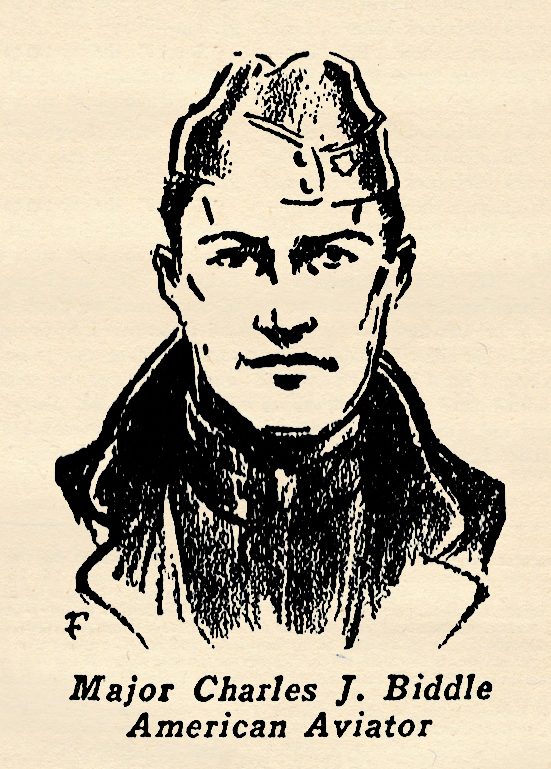 of that small number of American aviators who had actually had front line battle experience when his own country entered the war. Even before there were any indication* of his own country taking part, he sailed for France and enlisted in the French Army, where he was eventually transferred for aviation tralning. When the La Fayette Escadrille was formed, he wan invited to become a member. In that organization he won his commission as a Lieutenant in recognition of his ability and courage.
of that small number of American aviators who had actually had front line battle experience when his own country entered the war. Even before there were any indication* of his own country taking part, he sailed for France and enlisted in the French Army, where he was eventually transferred for aviation tralning. When the La Fayette Escadrille was formed, he wan invited to become a member. In that organization he won his commission as a Lieutenant in recognition of his ability and courage.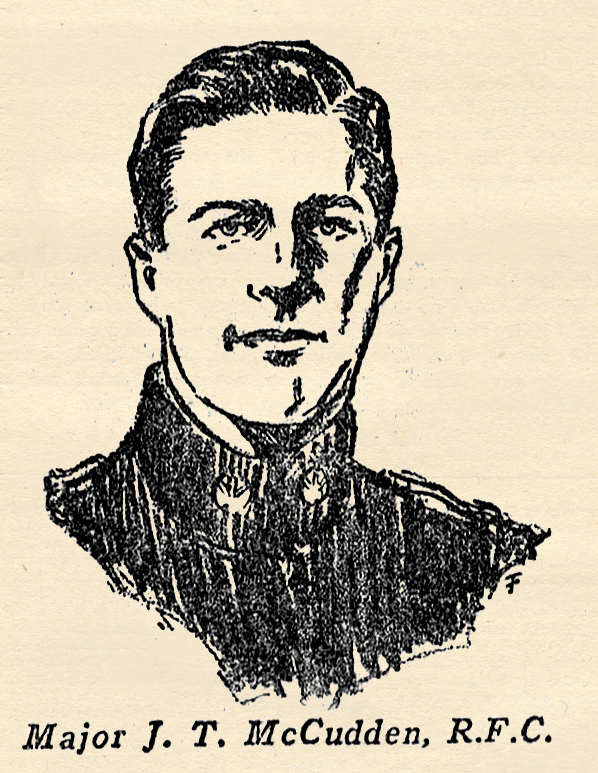 one of the most modest and unassuming of the great flying aces. When the war began he was an engine mechanic with the then recently formed Royal Flying Corps. After flying training he became a Sergeant pilot, and began, piling up the string of victories which eventually placed him at the top of all the British aces. He was progressively promoted to Lieutenant, Captain and Major, and won every medal possible, including the Victoria Cross.
one of the most modest and unassuming of the great flying aces. When the war began he was an engine mechanic with the then recently formed Royal Flying Corps. After flying training he became a Sergeant pilot, and began, piling up the string of victories which eventually placed him at the top of all the British aces. He was progressively promoted to Lieutenant, Captain and Major, and won every medal possible, including the Victoria Cross.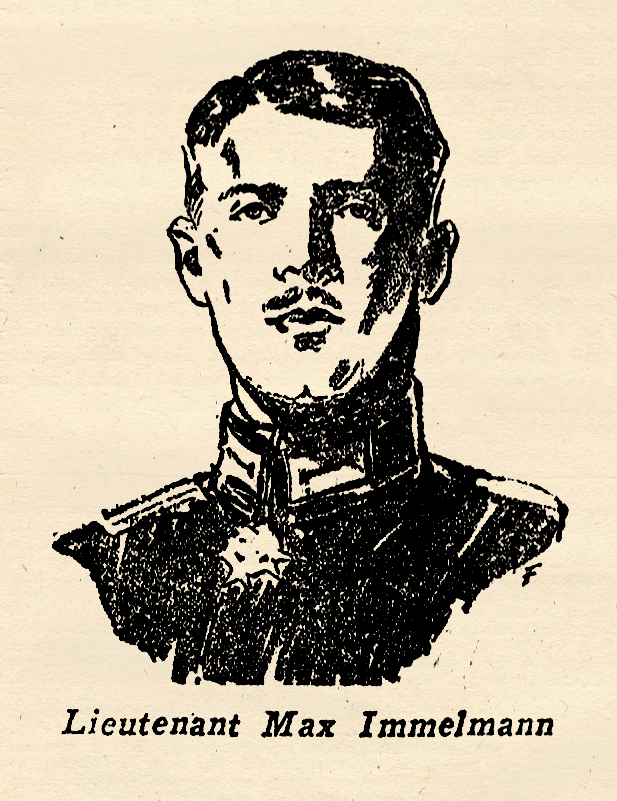 Immelmann was the first of the great German Aces. Immelmann scored victory after victory over the Allied flyers until his total score mounted higher than that of any of the Allied Aces.
Immelmann was the first of the great German Aces. Immelmann scored victory after victory over the Allied flyers until his total score mounted higher than that of any of the Allied Aces.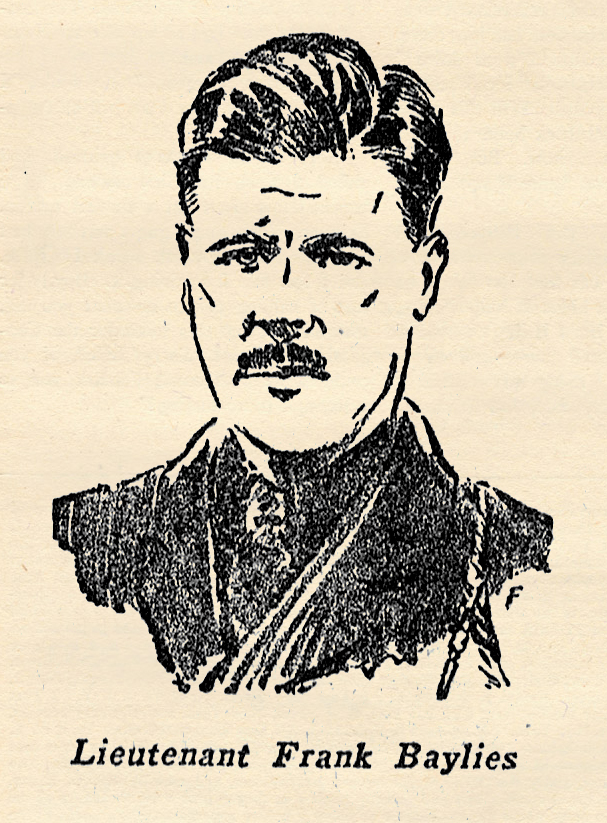 American Ambulance section, serving in that unit attached to the French armies from February 26th, 1916, to May 11th, 1918. In the early spring of ‘18 he transferred to the aviation. He became a member of the famous Stork squadron of the French Flying Corps.
American Ambulance section, serving in that unit attached to the French armies from February 26th, 1916, to May 11th, 1918. In the early spring of ‘18 he transferred to the aviation. He became a member of the famous Stork squadron of the French Flying Corps.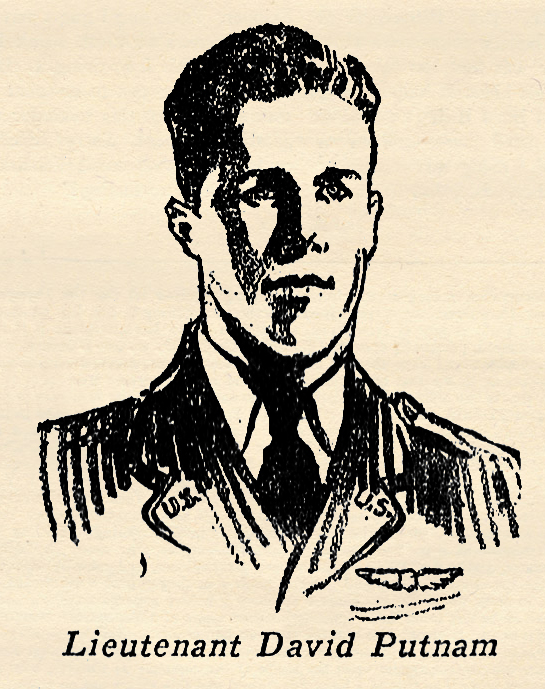 was one of the American flying aces who saw service under two flags. He began his career with the French before America entered the war. At first he served with the Ambulance Corps, but was later transferred to aviation, where he established a reputation as one of the most daring flyers on the front.
was one of the American flying aces who saw service under two flags. He began his career with the French before America entered the war. At first he served with the Ambulance Corps, but was later transferred to aviation, where he established a reputation as one of the most daring flyers on the front.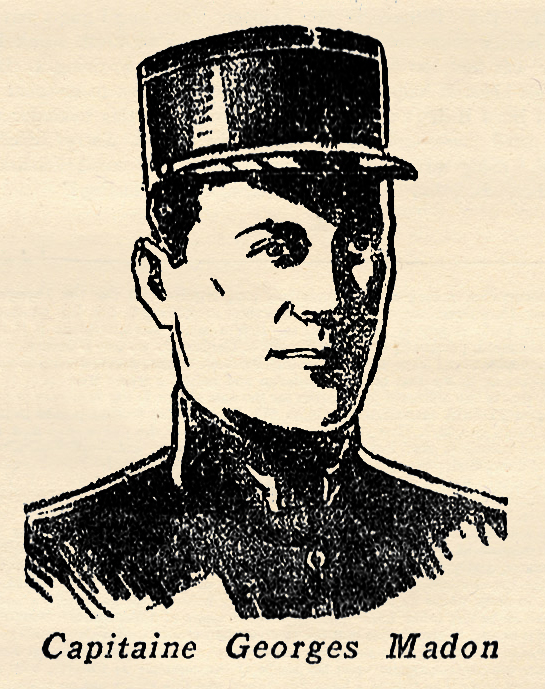 was one of the most famous of the French flying aces. Along with Guynemer, Navarro and Nungesser, he furnished the spectacular flying news that filled the newspapers in the early days of the World War. He was credited with over forty victories and only the great Guynemer topped him in the list of French aces during his time on the battle front.
was one of the most famous of the French flying aces. Along with Guynemer, Navarro and Nungesser, he furnished the spectacular flying news that filled the newspapers in the early days of the World War. He was credited with over forty victories and only the great Guynemer topped him in the list of French aces during his time on the battle front.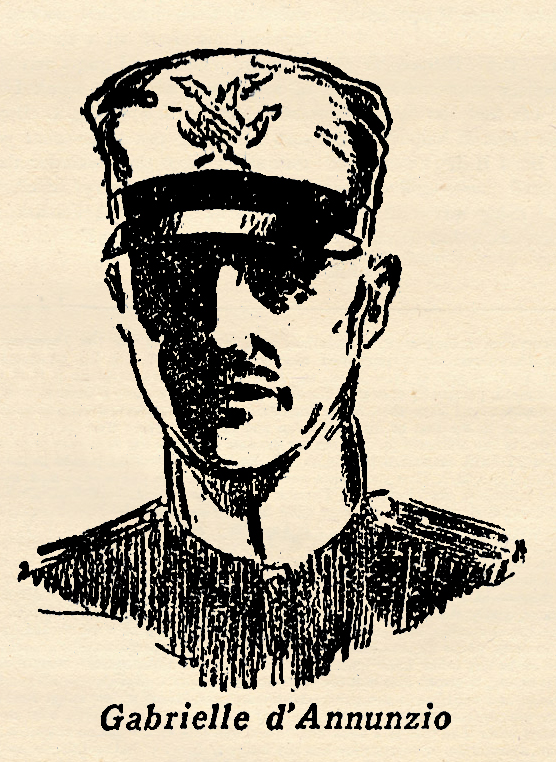 famous Italian poet and dramatist and enthusiastic patriot, was one of the most colorful and forceful of Italian flyers in the early days of the World War. He enlisted early in the most spectacular branch of the army, the Italian Air Corps. Soon after completing his training he was assigned to a bombardment squadron which was charged with harassing the then fast-advancing Austro-German armies, which threatened to overwhelm the brave Italian defenders and take the capitol at Home. By exerting superhuman efforts the Italians prevented that.
famous Italian poet and dramatist and enthusiastic patriot, was one of the most colorful and forceful of Italian flyers in the early days of the World War. He enlisted early in the most spectacular branch of the army, the Italian Air Corps. Soon after completing his training he was assigned to a bombardment squadron which was charged with harassing the then fast-advancing Austro-German armies, which threatened to overwhelm the brave Italian defenders and take the capitol at Home. By exerting superhuman efforts the Italians prevented that. much the name means to those few who knew how he fought and died. His front line career was short, hectic and dynamic. He blazed across the war-torn skies of France like a flaming meteor. Very few people ever heard of Luke during his short but Sensational career on the Western Front. His fame and name came after he died. He is recognized now as the most courageous, the most audacious war bird that ever handled a control stick and pressed the Bowden triggers mounted on it. Only Eddie Rickenbacker topped him in the final list of American Aces after the War was ended. Rickenbacker was officially credited with 26 victories. Frank Luke had 21. But the comparison is hardly fair to Luke, for Rickenbacker was on the front for almost six months, while Luke’s front line career lasted only a little over two weeks. Even in that short space of time he had worked up to the top and was the American Ace of Aces when he died. There is no telling what, score he would have run up, if fortune had been more in his favor. The story below he told to Sergeant John Monroe, who was a favorite of his.
much the name means to those few who knew how he fought and died. His front line career was short, hectic and dynamic. He blazed across the war-torn skies of France like a flaming meteor. Very few people ever heard of Luke during his short but Sensational career on the Western Front. His fame and name came after he died. He is recognized now as the most courageous, the most audacious war bird that ever handled a control stick and pressed the Bowden triggers mounted on it. Only Eddie Rickenbacker topped him in the final list of American Aces after the War was ended. Rickenbacker was officially credited with 26 victories. Frank Luke had 21. But the comparison is hardly fair to Luke, for Rickenbacker was on the front for almost six months, while Luke’s front line career lasted only a little over two weeks. Even in that short space of time he had worked up to the top and was the American Ace of Aces when he died. There is no telling what, score he would have run up, if fortune had been more in his favor. The story below he told to Sergeant John Monroe, who was a favorite of his.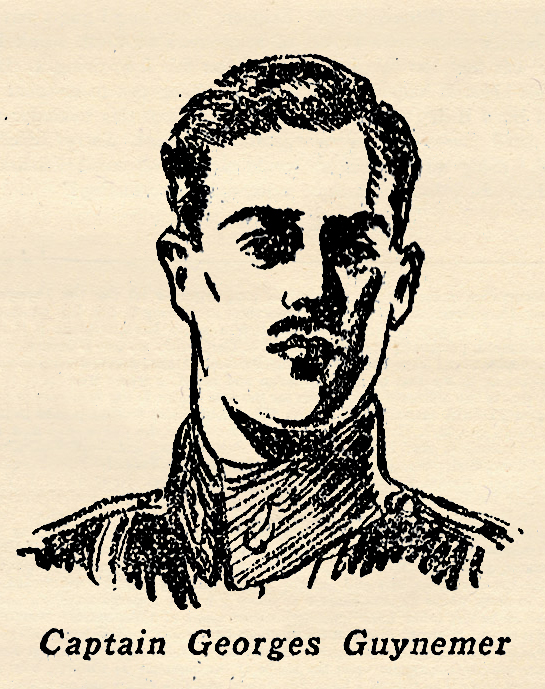 French flier, was the moat spectacular and colorful of all the flying Aces. Young, tall, slender, but in very poor physical health, he was a veritable demon in the air, He had absolutely no regard for his own personal safety. Time after time be attacked single-handed whole squadrons of enemy planes. On the ground he was shy, reserved, and spoke very few words to anyone. Whenever he came to Paris on his very infrequent leaves from the front to secure medical aid, the whole city was decorated in festive attire in his honor. He was the toast of the boulevards, the darling of the French populace. And the whole world mourned his passing when he died, shot down by a comparatively obscure German pilot, who got in a chance shot from exceedingly long range. The German pilot, Wisseman, never knew until afterward that it was the great Guynemer that he had shot down. When Guynemer passed mysteriously into the blue, he was officially credited with 57 enemy aircraft and universally recognized as the Ace of Aces of all the armies.
French flier, was the moat spectacular and colorful of all the flying Aces. Young, tall, slender, but in very poor physical health, he was a veritable demon in the air, He had absolutely no regard for his own personal safety. Time after time be attacked single-handed whole squadrons of enemy planes. On the ground he was shy, reserved, and spoke very few words to anyone. Whenever he came to Paris on his very infrequent leaves from the front to secure medical aid, the whole city was decorated in festive attire in his honor. He was the toast of the boulevards, the darling of the French populace. And the whole world mourned his passing when he died, shot down by a comparatively obscure German pilot, who got in a chance shot from exceedingly long range. The German pilot, Wisseman, never knew until afterward that it was the great Guynemer that he had shot down. When Guynemer passed mysteriously into the blue, he was officially credited with 57 enemy aircraft and universally recognized as the Ace of Aces of all the armies.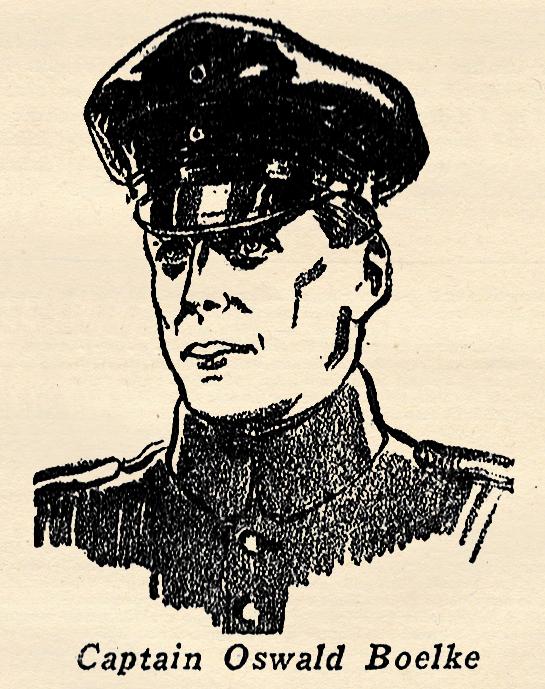 of the flying forces were not on the Allied side. The enemy also had its heroic figures.
of the flying forces were not on the Allied side. The enemy also had its heroic figures. was the first of the Royal Flying Corps pilots to make a distinguished record. Unlike the French, the British made no mention of their air pilot’s victories. One day Ball wrote home that he had just counted his 22nd victory. His mother proudly showed this letter to her friends. Ball was disbelieved.
was the first of the Royal Flying Corps pilots to make a distinguished record. Unlike the French, the British made no mention of their air pilot’s victories. One day Ball wrote home that he had just counted his 22nd victory. His mother proudly showed this letter to her friends. Ball was disbelieved.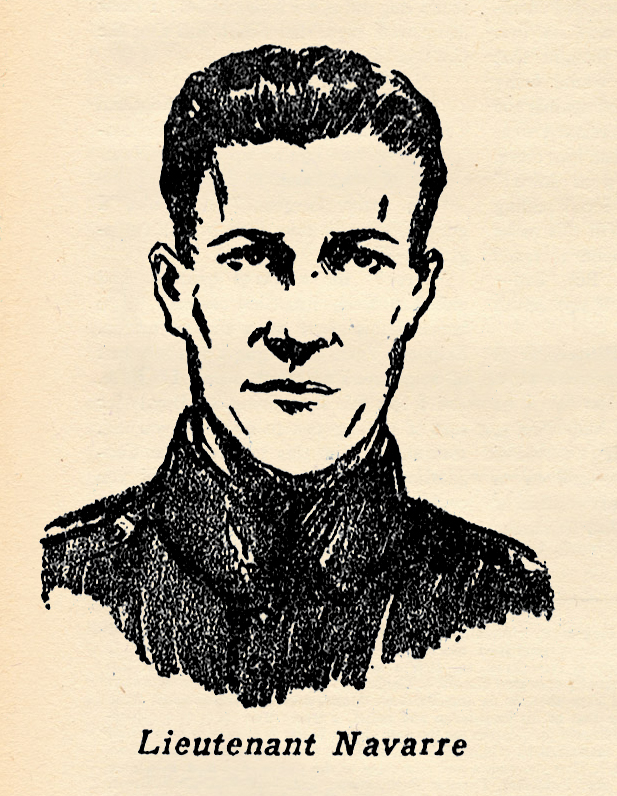 America entered the War, there was one name that was consistently emblazoned in the papers along with Marshal Joffre, Earl Kitchner, and the other high ranking generals. It was the name of Navarre, the “Sentinel of Verdun.” Navarre was the first Ace, the first man to destroy live enemy aircraft in plane to plane combat. At the first battle of Verdun he did yeoman duty. It was his reports brought in after solo patrols far in the rear of the German lines that enabled Marshal Joffre to so dispose his defense troops at Verdun that the attacking armies under the command of the German Crown Prince were never able to take the city.
America entered the War, there was one name that was consistently emblazoned in the papers along with Marshal Joffre, Earl Kitchner, and the other high ranking generals. It was the name of Navarre, the “Sentinel of Verdun.” Navarre was the first Ace, the first man to destroy live enemy aircraft in plane to plane combat. At the first battle of Verdun he did yeoman duty. It was his reports brought in after solo patrols far in the rear of the German lines that enabled Marshal Joffre to so dispose his defense troops at Verdun that the attacking armies under the command of the German Crown Prince were never able to take the city.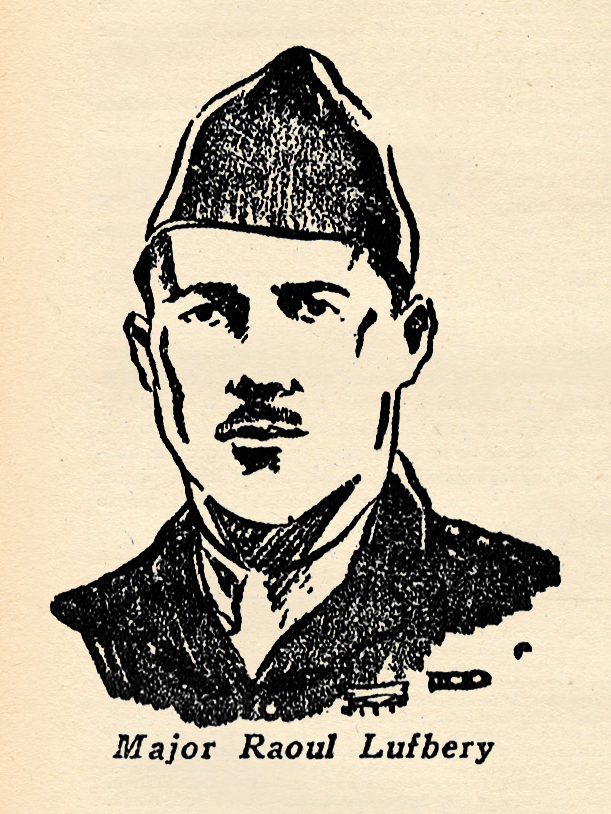 already famous when America entered the War. For some time he was the mechanic of Marc Pourpe, famous French flyer. Pourpe was killed in aerial combat. Lufbery who was with the Foreign Legion, asked to take his place in order to avenge his death. The French army, defying usual procedure sent him to join Escadrille de Bombardmente V. 102, where he made a distinguished record.
already famous when America entered the War. For some time he was the mechanic of Marc Pourpe, famous French flyer. Pourpe was killed in aerial combat. Lufbery who was with the Foreign Legion, asked to take his place in order to avenge his death. The French army, defying usual procedure sent him to join Escadrille de Bombardmente V. 102, where he made a distinguished record.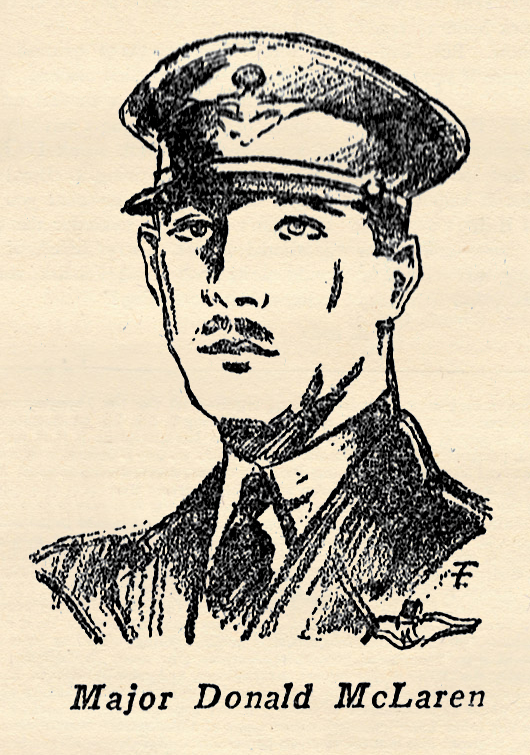 Donald McLaren was born in Ottawa, Canada, in 1893, but at an early age his parents moved to the Canadian Northwest, where he grew up with a gun in his hands. He got his first rifle at the age of six, and was an expert marksman by the time he was twelve. When the war broke out he was engaged in the fur business with his father, far up in the Peace River country. He came down from the north in the early spring of 1917 and enlisted in the Canadian army, in the aviation section. He went into training at Camp Borden, won his wings easily and quickly, and was immediately sent overseas. In February, 1918, he downed his first enemy aircraft. In the next 9 months he shot down 48 enemy planes and 6 balloons, ranking fourth among the Canadian Aces and sixth among the British. No ranking ace in any army shot down as many enemy aircraft as he did in the same length of time. For his feats he was decorated with the D.S.O., M.C., D.F.C. medals of the British forces, and the French conferred upon him both the Legion d’Honneur and Croix de Guerre. Oddly, just before the war ended, he was injured in a wrestling match with one of his comrades and spent armistice day in a hospital nursing a broken leg. He had gone through over a hundred air engagements without receiving a scratch. The air battle he describes below is unusual because almost 100 planes took part in it.
Donald McLaren was born in Ottawa, Canada, in 1893, but at an early age his parents moved to the Canadian Northwest, where he grew up with a gun in his hands. He got his first rifle at the age of six, and was an expert marksman by the time he was twelve. When the war broke out he was engaged in the fur business with his father, far up in the Peace River country. He came down from the north in the early spring of 1917 and enlisted in the Canadian army, in the aviation section. He went into training at Camp Borden, won his wings easily and quickly, and was immediately sent overseas. In February, 1918, he downed his first enemy aircraft. In the next 9 months he shot down 48 enemy planes and 6 balloons, ranking fourth among the Canadian Aces and sixth among the British. No ranking ace in any army shot down as many enemy aircraft as he did in the same length of time. For his feats he was decorated with the D.S.O., M.C., D.F.C. medals of the British forces, and the French conferred upon him both the Legion d’Honneur and Croix de Guerre. Oddly, just before the war ended, he was injured in a wrestling match with one of his comrades and spent armistice day in a hospital nursing a broken leg. He had gone through over a hundred air engagements without receiving a scratch. The air battle he describes below is unusual because almost 100 planes took part in it.